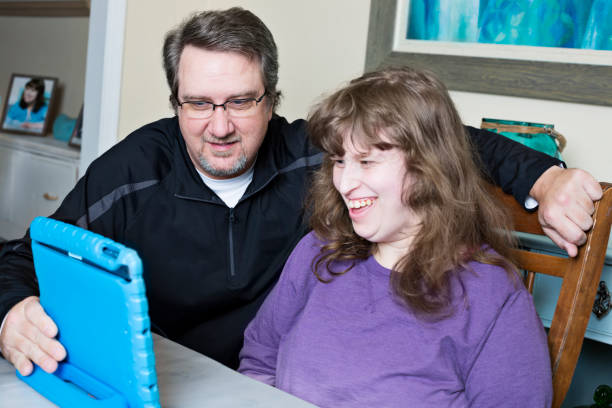What is Speech Therapy?
An articulation disorder is the inability to properly form certain sounds and words. A child with this speech disorder may omit, substitute, distort, or add sounds. An example of distorting a word would be saying “wabbit” instead of “rabbit”.
A person with receptive language disorder has trouble understanding and processing what others say, this can cause you to seem uninterested when someone is speaking, have trouble following directions, or have a limited vocabulary. Autism, Specific Learning Disability, Aphasia, hearing loss, and a head injury can lead to a receptive language disorder.
An expressive language disorder is difficulty conveying or expressing information. You may have trouble forming accurate sentences, such as using incorrect verbs and prepositions. It’s associated with developmental impairments, such as Down Syndrome, Aphasia, and hearing loss. It can also result from head trauma or a medical condition.
A pragmatic language disorder is the difficulty using appropriate communication in social situations. Someone may have trouble understanding the meaning of what others are saying. They may also have difficulty using language appropriately to get their needs met and to interact with others. In addition, children with a pragmatic language disorder have trouble using language in social situations.
A cognitive-communication disorder is the difficulty communicating because of an injury to the part of the brain that controls your ability to think. It can result in memory issues, problem solving, organizing thoughts, paying attention and difficulty speaking or listening. It can be caused by biological problems, such as abnormal brain development, certain neurological conditions, a brain injury, or stroke.
A fluency disorder affects the flow, speed, and rhythm of speech. Stuttering and cluttering are fluency disorders. A person with stuttering has trouble getting out a sound and may have speech that is blocked or interrupted, or may repeat part or all of a word. For example, a person might say “Good mor-morning” instead of “Good morning.” A person with cluttering often speaks very fast and merges words together.

Speech Language Therapy (SLT) is delivered to any individual who shows an impairment in areas such as those who shows an impairment in several different areas.
A variety of conditions may benefit from SLT and/or VIZQ.AI.
Autism
Down Syndrome
Stroke
Aphasia
Traumatic Brain Injury
Intellectual Disability
Cerebral Palsy
And more…
SLT is provided to assist all individuals to become as independent as possible, and to increase overall communication.
What are the disadvantages of Traditional Speech and Language Therapy?
Traditional SLT occurs in a therapy room in an individual or group setting, attempting to recreate meaningful therapy.
Static or 2D therapy materials are a limiting factor.
Individuals require therapy targeting multiple skills, with the goal to carry the skills over to real life.
Due to limited sessions and time in traditional SLT, individuals are unable to build success with each skill set, with them being unable to use those learned skills in real life.
Traditional SLT builds success in the room, but often does not translate once they walk out the therapy room door.
